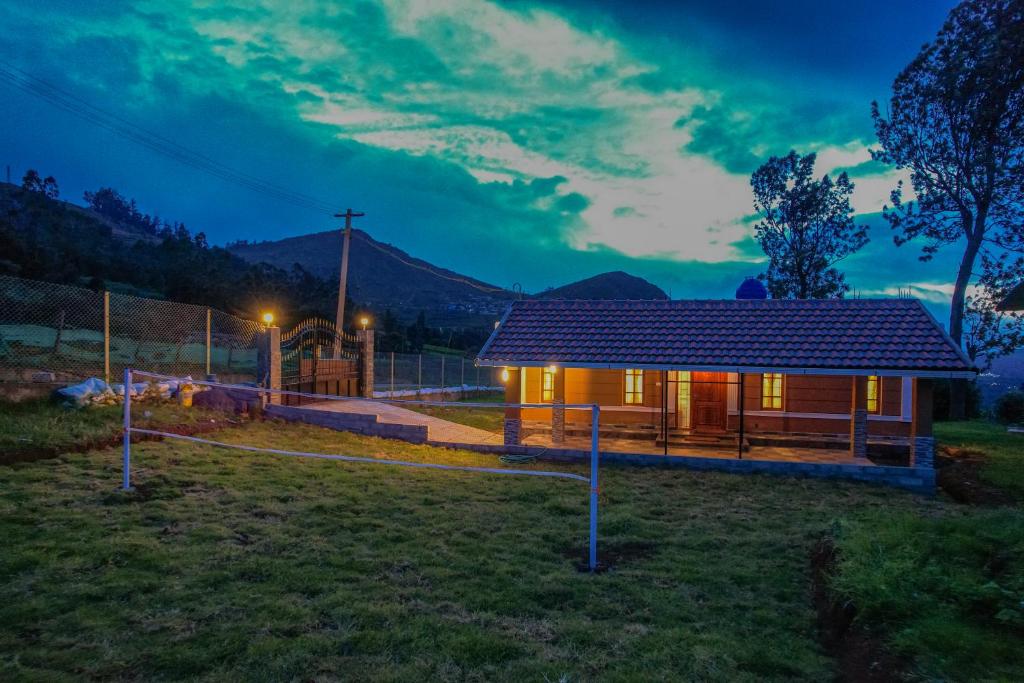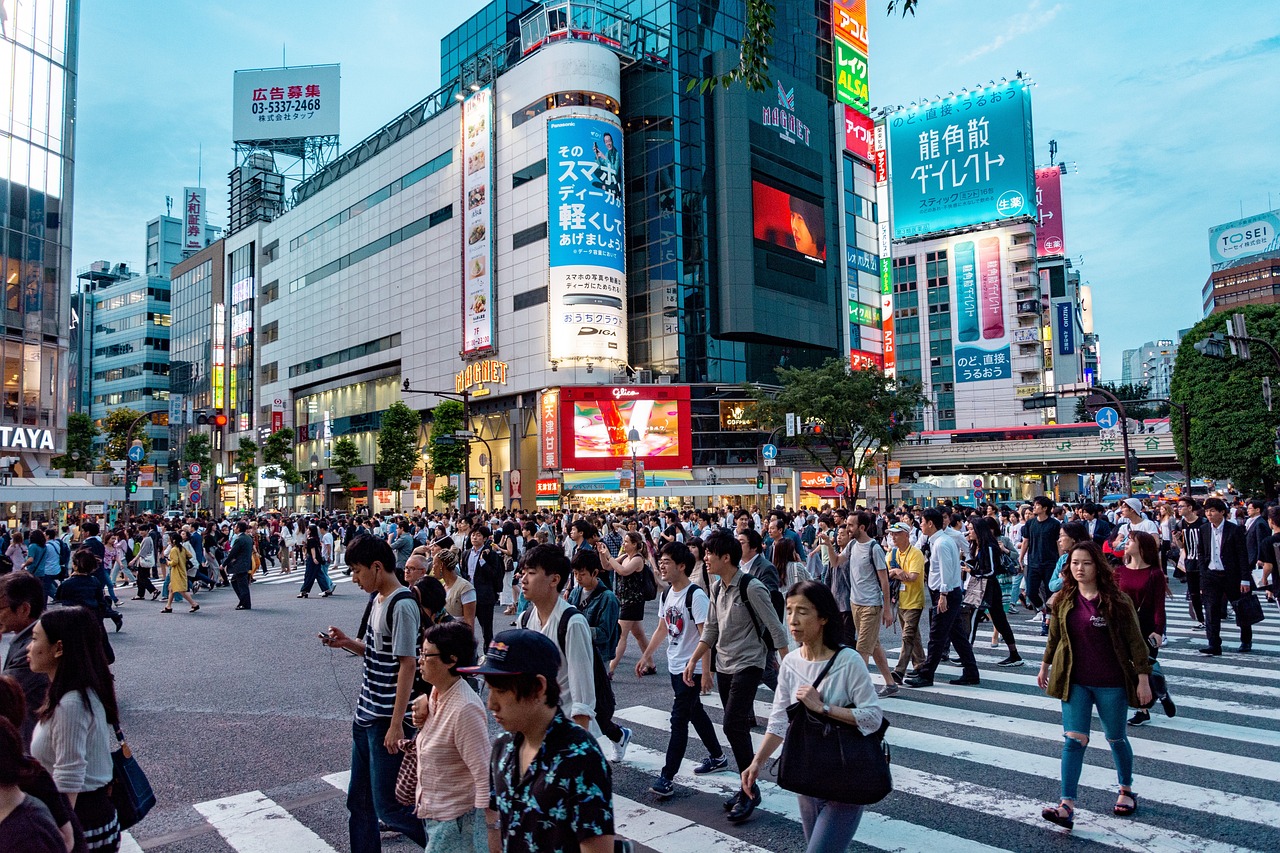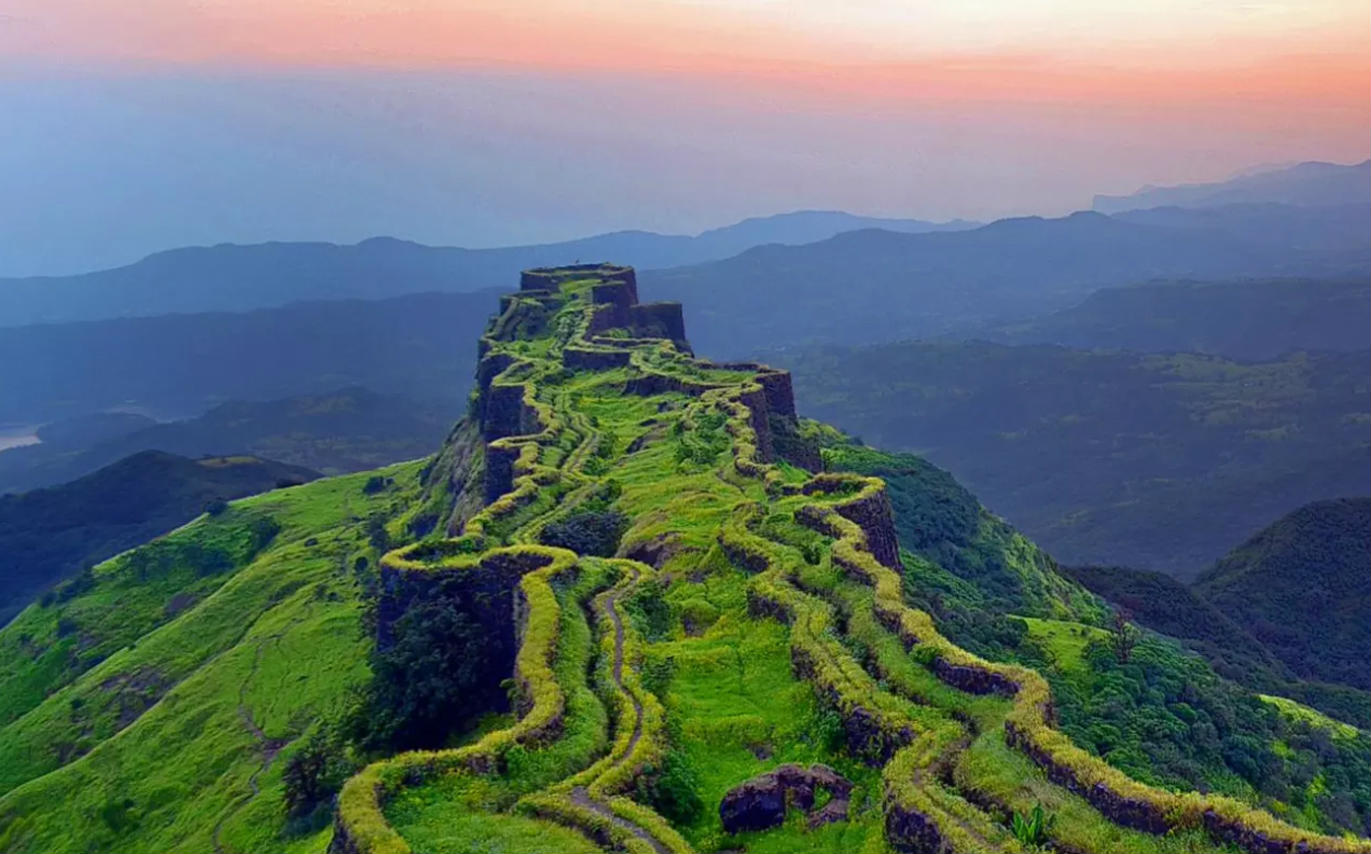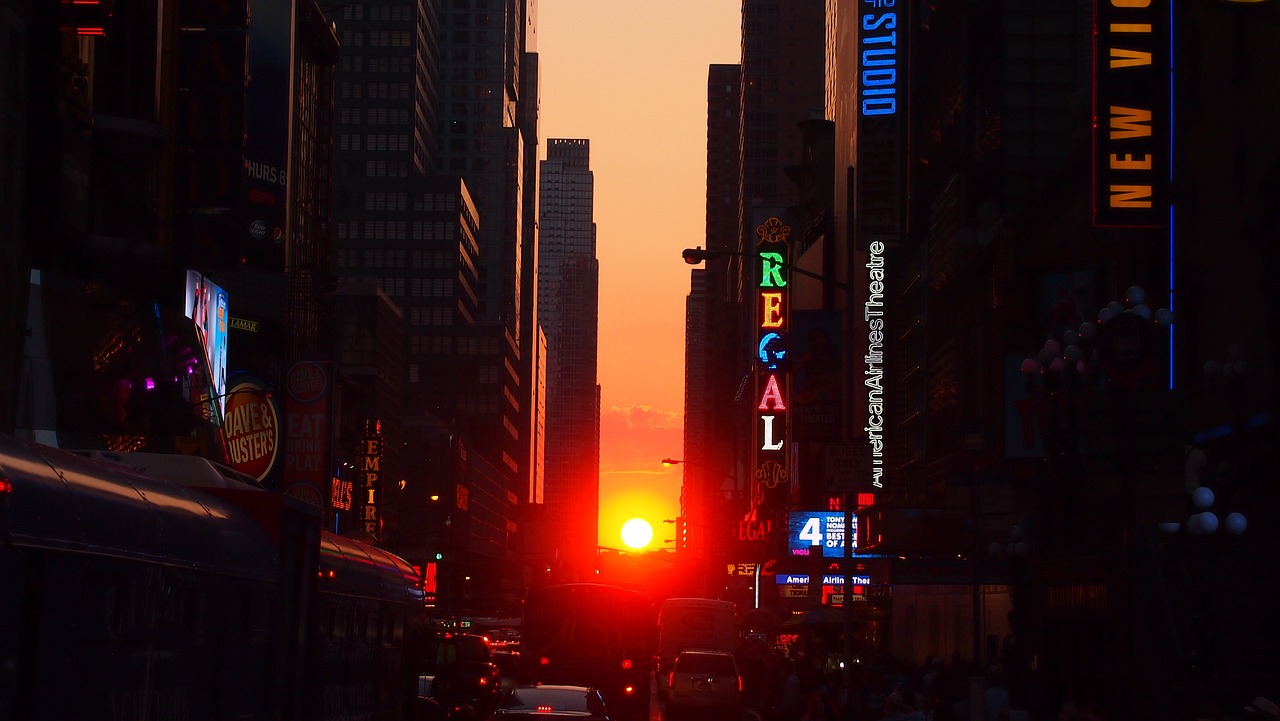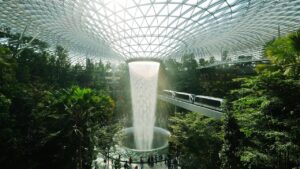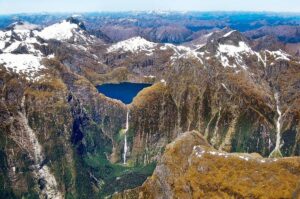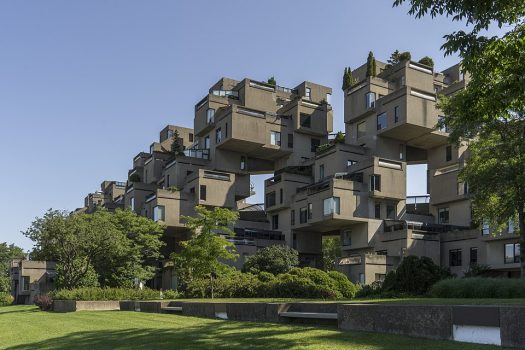 Pin
Pin Habitat 67 / Image from Wikimedia Commons
Some buildings don’t just stand—they stun. They twist like ribbons, glow like crystals, or lean so far they look like they’re about to fall. These aren’t scenes from a movie or strokes from a painter’s brush. They’re real structures, standing proudly in cities around the world—each one turning the ordinary into the unbelievable.
Across continents, a new kind of architecture has emerged—bold, bizarre, and breathtaking. These are mind-blowing buildings that seem to break every rule of gravity, symmetry, and sense. Some look like they melted under a surreal sun. Others resemble dragons, flowers, or frozen waves of light. And yet, every one of them has doors you can walk through, rooms you can enter, and stories you’ll never forget.
Table of Contents
1. Museum of the Future – Dubai’s Silver Eye of Tomorrow
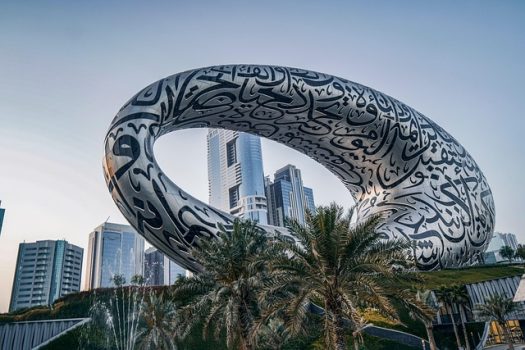 Pin
Pin Image by Alexandru Manole from Pixabay
In the skyline of Dubai, surrounded by towering giants of glass and steel, the Museum of the Future gleams like a silver ring pulled from the future. Its torus shape—sleek, hollow in the center, and fully covered with Arabic calligraphy—feels more like something imagined in science fiction than built with human hands.
The structure has no traditional columns inside. Instead, it uses innovative engineering to create a fluid space that feels both weightless and eternal. The outer shell, crafted from stainless steel and fiberglass, reflects the changing light of the desert, making it shimmer differently with every passing hour. Inside, the museum houses exhibits that stretch the limits of imagination—from AI to climate solutions.
Dubai’s Museum of the Future is not just a marvel of construction. It’s a bold vision of possibility—of what happens when architecture meets ambition without restraint. Every detail dares people to think forward, and yet, it sits firmly grounded in the present.
2. Lotus Temple – A Marble Bloom in New Delhi
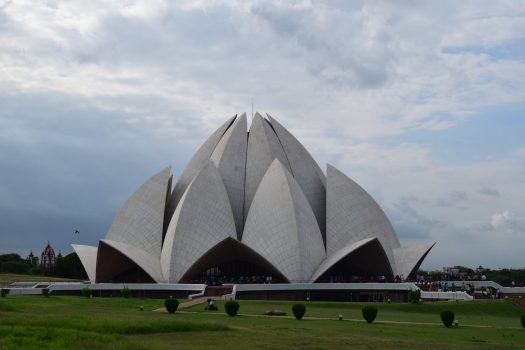 Pin
Pin Photo by The Six
In New Delhi, a pure white blossom rises silently from the earth—the Lotus Temple. Its 27 marble petals curve outward like a flower in mid-bloom, arranged in gentle symmetry that captures both balance and peace. Unlike many sacred structures, it welcomes all faiths and backgrounds, offering stillness over spectacle.
The surface is made entirely of white marble imported from Greece, adding to the ethereal glow that changes with the sun. During sunrise and sunset, the building seems to radiate warmth, turning gold and amber, while at night, soft lighting transforms it into a glowing sculpture. There are no idols inside, no sermons—only silence, serenity, and the murmur of thoughtful visitors.
What makes the Lotus Temple feel unreal is not just its shape, but its presence. It stands quiet in the chaos of the capital, reminding everyone who enters that stillness can be just as powerful as sound. It doesn’t shout its beauty—it breathes it.
3. The Hundertwasserhaus – Vienna’s Rebellion Against Straight Lines
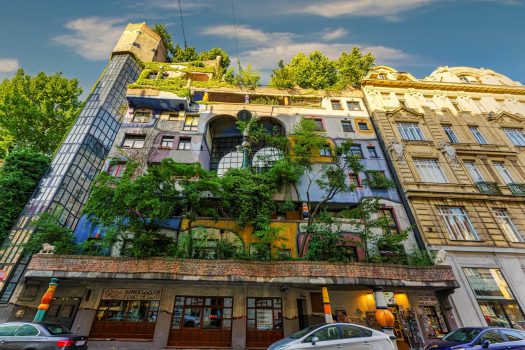 Pin
Pin Photo by Ramon Perucho
In Vienna, where classical elegance dominates the streets, the Hundertwasserhaus stands like a wild dream brought to life. Designed by artist Friedensreich Hundertwasser, this building rejects symmetry, straight edges, and monotony. Instead, it bursts with uneven floors, rainbow-colored walls, and trees growing straight from the windows.
Each apartment in the Hundertwasserhaus is unique, like an artwork that people live in. The roof is covered in grass and shrubs, and balconies seem to grow out of the walls at their own will. Even the windows appear uneven, giving the whole structure a playful, childlike charm. It’s not built to impress with height or grandeur—but with heart, personality, and spirit.
Hundertwasser believed that people should live in harmony with nature and that buildings should reflect individuality. His creation doesn’t just stand out—it speaks. It whispers that beauty isn’t in perfection, but in embracing the unexpected. This house proves that when art becomes shelter, even everyday living turns into an experience.
4. Capital Gate – Abu Dhabi’s Leaning Marvel
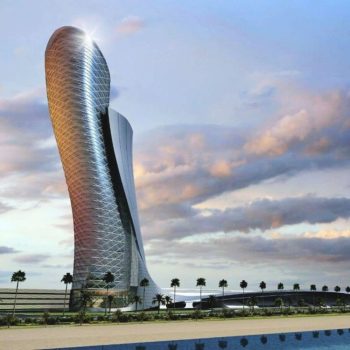 Pin
Pin Image from Instagram
Rising from Abu Dhabi’s modern skyline is a structure that defies gravity—Capital Gate. Often called the “Leaning Tower of the Middle East,” it holds the Guinness World Record for the farthest man-made lean, tilting 18 degrees westward—over four times more than Pisa’s famous tower. Yet, it was designed this way on purpose.
Capital Gate’s twisting glass facade curves upward like a wave frozen in motion. Engineers used a dense mesh of steel and reinforced concrete to achieve this calculated tilt, ensuring not just stability but elegance. Inside, it houses luxury offices and the five-star Hyatt hotel, with panoramic views of the Arabian Gulf.
What gives this building its surreal edge is its deliberate imbalance—an illusion of fragility masking engineering precision. As sunlight glides across its windows, the building seems to move, almost as if it’s leaning further with the day. Capital Gate isn’t just a building—it’s a challenge to gravity and a triumph of creative ambition.
5. Casa Batlló – Gaudí’s Dreamlike Dragon in Barcelona
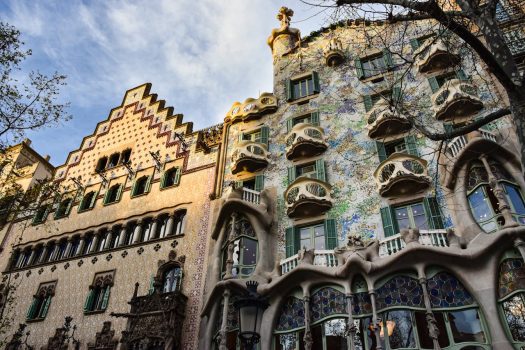 Pin
Pin Photo by AXP Photography
Along the bustling Passeig de Gràcia in Barcelona stands a building that feels plucked from a fairytale—Casa Batlló. Designed by the visionary Antoni Gaudí, this masterpiece doesn’t follow architectural norms. Its wavy façade, mosaic skin, and bone-like balconies create the illusion of a living creature, often compared to a sleeping dragon.
The roofline resembles scales, arching like a dragon’s back, while the shimmering ceramic tiles change color depending on the light. The balconies appear as skeletal masks, and the columns near the entrance seem to grow from the ground like organic limbs. There are no hard edges inside—only curves, flowing lines, and stained-glass light wells.
Gaudí’s intention was never to simply design a house. He wanted to craft a breathing space—a structure that feels alive. Walking through Casa Batlló is like stepping into a surreal painting, where every surface whispers with creativity. It’s not just a home—it’s a bold, colorful story told in stone and glass.
6. Harpa Concert Hall – Reykjavík’s Crystal of Ice and Light
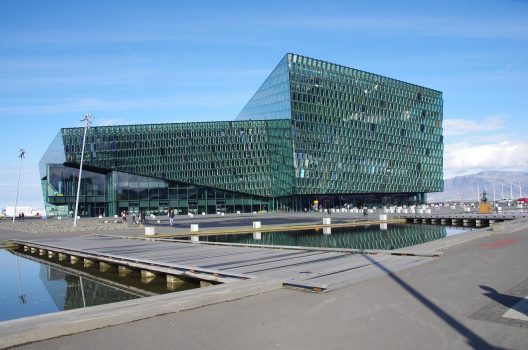 Pin
Pin Image by Vilve Roosioks from Pixabay
Standing along Reykjavík’s harbor, Harpa Concert Hall looks less like a building and more like a sculpture made of frozen light. Designed in collaboration with artist Ólafur Elíasson, its geometric glass panels reflect the sky, ocean, and city—creating a constantly shifting pattern of color and form.
The façade is built from hundreds of hexagonal glass modules, inspired by Iceland’s basalt landscapes and icy textures. By day, Harpa mirrors the northern skies in shades of blue, silver, and violet. By night, it glows from within, turning into a radiant beacon that lights up the waterfront like a modern lighthouse.
Harpa isn’t just a concert venue—it’s an experience. Inside, the design continues to echo the theme of nature meeting culture. Every corner feels carefully tuned, not only for sound but also for visual wonder. It’s a place where architecture, art, and music collide, making even silence feel sacred. In a country shaped by volcanoes and glaciers, Harpa feels like its crystal heart.
7. The Crooked House – Sopot’s Cartoonish Curiosity
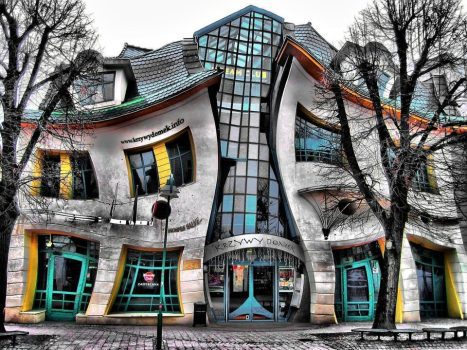 Pin
Pin Image from Wikimedia Commons
Tucked into the quiet streets of Sopot, Poland, the Crooked House (Krzywy Domek) bends reality with a playful wink. It looks like something straight out of an animated film—walls warped like melting wax, windows that curve and twist, and a roof that seems to ripple with motion.
Built in 2004, this surreal structure was inspired by the fairy-tale illustrations of Jan Marcin Szancer and Per Dahlberg. The building houses shops, cafés, and offices, but it’s the façade that stops people in their tracks. Every inch feels whimsical, as if the house is caught mid-laugh or stretching after a long sleep.
What sets the Crooked House apart isn’t just its dreamlike appearance, but its refusal to conform. It challenges the seriousness often attached to urban architecture and instead brings joy into everyday space. It’s a reminder that not all buildings need to be sharp or serious—some can just be fun. And sometimes, fun is unforgettable.
8. The CCTV Headquarters – Beijing’s Architectural Rebel
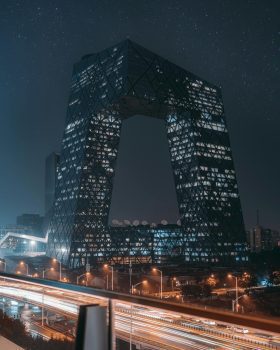 Pin
Pin Photo by Rick Han
In Beijing’s business district, the CCTV Headquarters looms like a futuristic riddle. Shaped like a twisted loop, with two leaning towers connected at sharp angles, this 44-story building seems to defy gravity and logic. It doesn’t rise—it folds, bends, and challenges the rules of vertical design.
Designed by Rem Koolhaas and Ole Scheeren, the structure took eight years to complete, involving cutting-edge engineering to balance its massive overhangs. The external grid-like pattern on its surface adds texture and strength, while also giving it an unmistakable visual identity. From different angles, the building seems to transform—sometimes looking like an arch, other times like a portal to another world.
Locals have nicknamed it “Big Pants” for its unusual shape, but there’s no denying its bold presence. The CCTV Headquarters isn’t trying to blend in—it’s making a statement. In a city full of ancient palaces and modern towers, this one stands apart: fearless, inventive, and entirely unforgettable.
9. Habitat 67 – Montréal’s Modular Monument
 Pin
Pin Image from Wikimedia Commons
On the edge of the Saint Lawrence River in Montréal sits Habitat 67, a building that looks like it was made by stacking oversized toy blocks. Created by architect Moshe Safdie for Expo 67, this residential complex reimagines urban living with its modular, repeating concrete units—each with its own terrace and unique view.
The structure consists of 354 identical prefabricated boxes, arranged in various combinations to form 146 distinct residences. Though made of the same material, no two units feel the same, giving each home individuality while still feeling part of a larger whole. The design maximizes light, privacy, and access to green spaces.
Habitat 67 is more than a striking sculpture—it was a vision for the future. Safdie dreamed of cities that felt open, breathable, and human-centered. Decades later, it still feels ahead of its time. The complex doesn’t just house people—it encourages them to live with a sense of freedom, creativity, and connection that most urban buildings can’t offer.
10. Sagrada Família – Barcelona’s Eternal Masterpiece
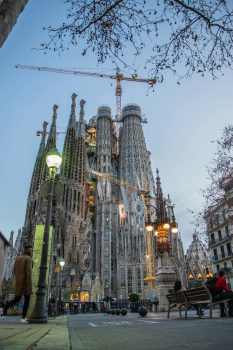 Pin
Pin Photo by Media Lens King
Towering over Barcelona with its intricate spires and celestial curves, the Sagrada Família is unlike any other building in the world. Designed by Antoni Gaudí, it has been under construction since 1882—and it still isn’t finished. Yet, even in its incomplete form, it draws millions of visitors each year with its breathtaking beauty and deep symbolism.
Every inch of the basilica tells a story. From the Nativity façade, covered in natural forms like leaves, animals, and stars, to the Passion façade, stark and angular in tone, Gaudí’s vision blends faith, nature, and geometry into one spiritual structure. Inside, tall columns stretch like tree trunks toward the ceiling, branching out in light-drenched silence.
What makes the Sagrada Família feel unreal is not just its form—it’s the devotion behind it. Built stone by stone across generations, it reflects not only a single man’s dream, but a city’s commitment to awe. It feels alive, ever-growing, as if shaped by time itself rather than hands alone.
FAQs
Yes, most of these buildings—like the Sagrada Família, Lotus Temple, and Harpa Concert Hall—are open to visitors. Some are places of worship, others house museums, offices, or performance spaces. It’s always best to check official websites for hours and entry details.
It’s usually a mix of design, materials, and concept. These structures often challenge traditional ideas of symmetry, gravity, or surface, using bold shapes, creative engineering, or artistic inspiration to appear dreamlike or surreal.
They’re both. While their exteriors may seem fantastical, every building in this list is fully functional—used for homes, events, worship, or workspaces. They prove that practical spaces don’t have to sacrifice creativity.
Many were created by visionary architects like Antoni Gaudí, Frank Gehry, and Rem Koolhaas—known for pushing the limits of form and engineering while making art from architecture.
Yes, though they’re spread across several continents. With careful planning, you could create an unforgettable global itinerary centered around these architectural wonders.


